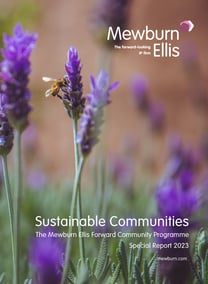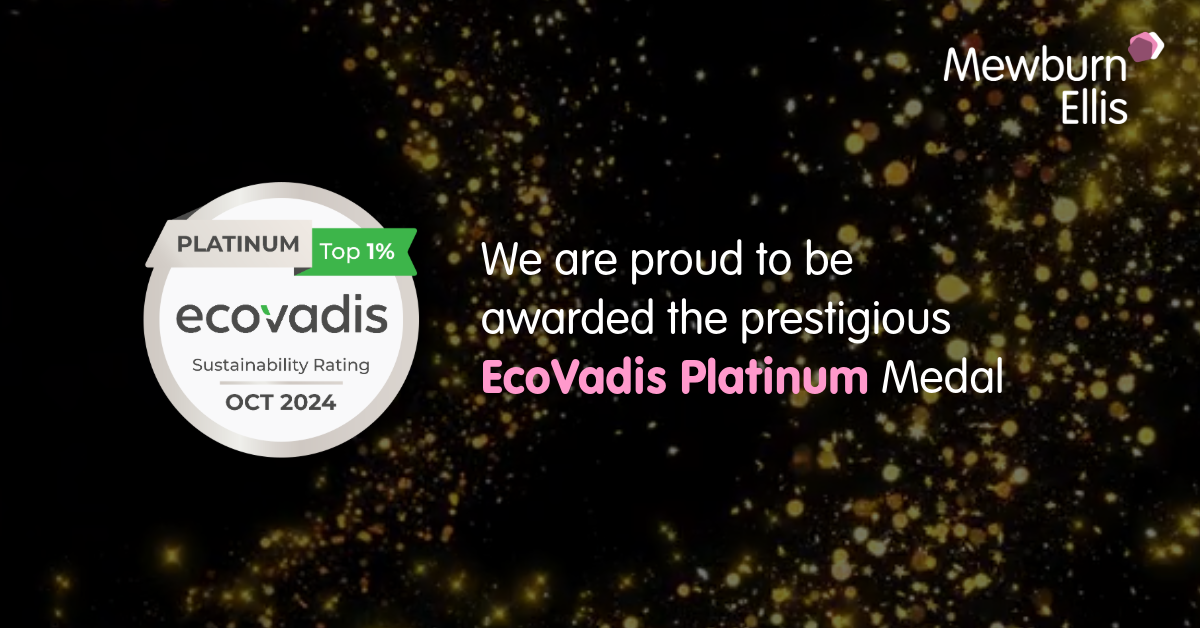
As a business, we have made several commitments about our environmental impact, and in particular our carbon emissions. These include:
- To fully offset all carbon emissions each year;
- To reduce our scope 1 and 2 greenhouse gas (GHG) emissions* by 42% by 2030; and
- To be net-zero by 2050 we are working to reduce our carbon emissions.
In the 22 – 23 financial year we have made good progress towards these goals. In the 21 – 22 financial year, our normalised** emissions were 652 tonnes of carbon dioxide equivalent emissions and for the 22 – 23 year, they were 325 tonnes of carbon dioxide equivalent – a 48% reduction!
However, 325 tonnes is still a lot more than zero tonnes…
This is where offsetting comes in. This year we have once again purchased carbon offsetting credits to offset the carbon that we have emitted. A carbon offsetting credit is a credit representing a reduction in GHG emissions into the atmosphere or an increase in carbon storage.
A range of types of carbon offset credit are available to purchase, and they’re not created equal. Each type differs in how it achieves the reduction in emissions or increase in carbon storage.
The world of carbon offsetting credits is in its infancy and is somewhat murky, with investigations into various types of offsetting suggesting that often the credits you are purchasing don’t in fact result in genuine emissions reductions/increases in stored carbon. Even where purchasing credits does result in reductions in emissions or atmospheric CO2, these reductions may only be temporary.
As we develop a greater understanding of the best approach and work towards net-zero, we have become more sophisticated in our selection of credit types. This is a continuous process, we’ll be looking and re-evaluating our carbon offsets every year to make the best possible choices. The Oxford Offsetting Principles, developed by the Smith School of Enterprise and the Environment at the University of Oxford, provide four main elements for credible net-zero-aligned offsetting:
- Prioritise reducing our own emissions first, ensure the environmental integrity of offsets you use and disclose how these offsets operate;
- Shift towards options that directly remove carbon from the atmosphere;
- Shift offsetting towards long-lived storage, which removes carbon from the atmosphere permanently or almost permanently; and
- Support development of a market for new-zero-aligned offsets – that is, offsets that remove carbon from the atmosphere, rather than offsets that prevent a certain amount further emissions elsewhere from occurring.
Principle I
Reducing our own emissions is something that we are continuing to work on. Progress has been made this year. We need to continue to take steps that reduce our emissions and this will become increasingly challenging as air travel-related emissions (which are hard to abate) make up a significant proportion of our emissions.
We have again chosen to purchase carbon offsets through Ecologi, who support a broad range of gold standard and verified carbon standard projects to offset carbon emissions, and we publish the details of our offsetting on our website and in our annual Sustainable Communities Special Report.
Principles II – IV
In 21 – 22, we chose the following blend of offsets:
- 26% deforestation prevention projects
- 46% renewable energy installation projects
- 28% emissions avoidance projects (providing cleaner cooking stoves)
Of these, deforestation prevention projects help to directly remove carbon from the atmosphere as the continued growth of forests results in an increase in biomass containing carbon originating from the atmosphere.
However, deforestation prevention projects are only short term (on an atmospheric time-scale anyway!), and do not represent a permanent storage of atmospheric carbon. Prevention projects only run for a certain time period, after which the fate of the biomass is uncertain and re-release of the captured carbon is possible.
Renewable energy projects and emissions avoidance projects are similar to each other. These provide a carbon credit by avoiding an emission that, absent the purchase of the carbon credit, would otherwise occur elsewhere in the world. These provide permanent avoidance of such emissions occurring. However, such offsets don’t actually remove carbon from the atmosphere and are therefore not net-zero aligned: as we approach net-zero, there will no longer be emissions that we can prevent occurring by purchasing such offsets, because all easy-to-abate emissions sources will have been eliminated.
Therefore, this year we have altered our approach to align with principles II – IV above set out by the experts, purchasing the following blend of offsets:
Biochar offsetting involves a process by which biomass is pyrolyzed into biochar (a highly stable form of carbon that does not readily oxidise to CO2). The biochar can then be buried in soils where it can improve soil productivity and store carbon over geological timescales. Biochar projects therefore not only directly remove carbon from the atmosphere (by virtue of the growth of the biomass it uses), is a form of long-lived carbon storage, and is a net-zero aligned offset – it hits all of principles II – IV!
If biochar offsetting is so great, why is our biochar allocation relatively small? Biochar, as with all permanent/long-lived carbon storage technologies on the market now, is expensive – around 30 times more so than the offsets we purchased last year. Additionally, these permanent/long-lived carbon storage credits are in high demand and often in limited supply.
Therefore, our approach is to:
- offset as much of our emissions with biochar projects as possible, being mindful of cost and within the available credits to buy, which was 3% (10 tonnes);
- support the development of these new permanent carbon storage technologies at an early stage – they will ultimately be needed for the world to reach true net-zero and in the mid-term to prevent the worst effects of climate change; and,
- offset the remainder of our emissions using projects that a) represent a permanent offset of emissions and b) align with what we do as a business. Given that we are in the business of protecting people’s technological inventions, renewable energy projects fit this bill.
This approach fundamentally moves us in the right direction for where we’ll need to be to achieve net-zero by 2050. In the coming years we will need to continue shifting towards offsetting all our emissions with projects that remove and permanently store carbon, like Biochar. As our total emissions hopefully continue to fall and the cost of such offset come down with increasing adoption, we can hopefully continue making this shift.
Learn more about our sustainability initiatives on our website and in our annual Sustainable Communities Report.
* You can find out more about what each scope means here.
** The contribution of businesses-travel based emissions was estimated based on pre-2020 figures since in at least part of the 21 – 22 financial year business travel was impacted by travel restrictions due to the Covid-19 pandemic.
|
|
Sustainable Communities - Special Report 2023This Sustainable Communities 2023 Annual Report summarises the progress we have made in the last twelve months since our previous annual report and highlights our tremendous achievements, as well as setting out our plans for 2023-24. |
Rob is a patent attorney in our engineering and ICT team. Rob has an MEng degree in Chemical Engineering from the University of Cambridge. His masters research project focussed on three-dimensional analysis of particle-size segregation within granular avalanches using magnetic resonance imaging. During his undergraduate studies, Rob spent time working for Proctor & Gamble within their Baby-Care R&D Group.
Email: rob.walker@mewburn.com
Sign up to our newsletter: Forward - news, insights and features
Our people
Our IP specialists work at all stage of the IP life cycle and provide strategic advice about patent, trade mark and registered designs, as well as any IP-related disputes and legal and commercial requirements.
Our peopleContact Us
We have an easily-accessible office in central London, as well as a number of regional offices throughout the UK and an office in Munich, Germany. We’d love to hear from you, so please get in touch.
Get in touch



